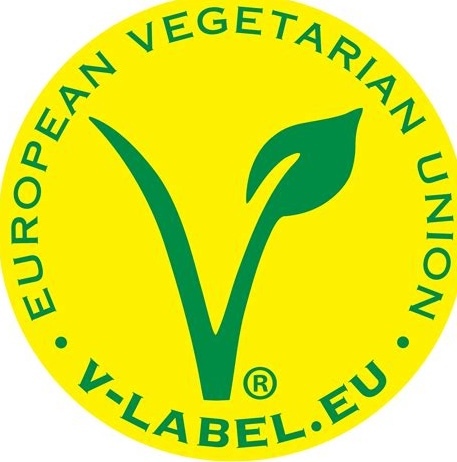I’ve gotten into polenta recently. I cook it up ahead of time and put it in a sealed dish in the fridge. When it cools and sets up, it’s easy to slice into sections and eat as finger food. I can eat it plain, with hot sauce or sometimes I’ll saute up vegetables (peppers, onions, zucchini, whatever) and add them to the polenta before it cools. The particularly cool thing is that I can eat it hot or cold. Once it’s set up, it toasts up nicely too.
- 0 Posts
- 12 Comments
Do you know if they own the house? Find out.
They could be renting the place or - as was the situation in my neighborhood - one of your bikers could have “borrowed” the house from a family member. In our neighborhood, the house previously belonged to a distant relative who passed away. The majority of the family lives over a thousand miles away, so they told their wastrel daughter that she could use the house while she was getting clean.
Needless to say, the “getting clean” process never happened. She invited a host of random people to hang out at her place and they trashed it over the course of almost a year. Eventually, the family found out about the situation when one of the neighbors thought to look into ownership. They kicked the daughter out of the house and have been gutting it for the last two months, trying to clear out all of the damage done by the daughter and her friends.
Long story short, find out who actually owns the house. That may give you some options…

 5·9 months ago
5·9 months agoGoing to college in New Orleans, we had a game where everyone had to convince at least one tourist that the river was pronounced MissisSIPPi, but the residents of the state preferred it if you’d say MisSISSippi.

 3·9 months ago
3·9 months agoI’m with you. Started working to eliminate Teflon from the kitchen and went full cast iron, but eggs were still a challenge… Until someone turned me on to carbon steel.
It’s lighter (not as light as an aluminum pan with Teflon, but significantly lighter than cast iron) and takes the same abuse and seasoning as cast iron.

 8·10 months ago
8·10 months agoGeographically? Thousands of miles away. Philosophically? Even further (she’s fundie, I’m atheist). Conversationally? Pretty close. We text, talk or video chat multiple times per week. We’re probably closer now than we have been at any point in our lives.
Another real acronym with a funny story (maybe only to old geeks like me) is STONITH.
Back when “high availability” meant two servers with shared storage and a “heartbeat” network connection, if one of the servers failed, the second one would notice there was no more heartbeat from the first and pick up the traffic so users would never know.
However, if the servers lost the network connection, there’d be no way to tell if the other server was still running and if both continued accessing the shared storage, they could corrupt the application data. So each server could take over if it noticed the other wasn’t available by executing STONITH (Shoot The Other Node In The Head) basically sending a power down signal to the PDU, making sure the other node couldn’t corrupt data.

 203·11 months ago
203·11 months agoMy mobile hotspot name is Win32Virus.exe
The looks when I turn it on in an airport…
and Domino’s.

 81·1 year ago
81·1 year agoSawagani - Japanese river crab. They’re tiny; about the size of a US nickel and you eat them fried whole, shell and all. Apparently they aren’t exported any more, but I had them at a sushi restaurant in Austin around 2000. They were delicious, like extra-crunchy crab-flavored popcorn.

 2·1 year ago
2·1 year agoAgreed. Rabbit doesn’t taste like chicken to me either. I live close to a rabbit farm, so I get it fairly regularly. To me, it’s best as a filler in sausage. I like to make rabbit sausage with apple or cranberry. It’s pretty lean so I also add a bit of fat - either pork or beef.
My first cat was diagnosed as diabetic at 9 years old. He lived to 17. We tested him daily - which he didn’t mind at all - and usually ended up giving him one shot of insulin per day.
He was the same old cat the entire time. I’m really glad we learned how to take care of him because now I’m not worried about having another diabetic cat. It’s just another thing to check on. Cats are just so accommodating when they know you’re taking care of them.


pfSense and OPNsense are firewalls. OpenWRT is router firmware. They’re all open source - to varying degrees - and they all have overlapping features and functionality.
Quick breakdown:
So the question of pfSense or OPNsense is either/or - you’d typically pick one or the other. Note that I’m staying away from the political comments that will invariably come up around this comparison. It’s enough to know that both have commercial offerings in addition to their open source versions and people have strong opinions one way or the other.
Either one of either pfSense or OPNsense in conjunction with OpenWRT is common, with OpenWRT on the wireless devices and pfSense/OPNsense at the egress to WAN. In your case, Omada already does what OpenWRT would do - along with some very limited versions of what you could do with pfSense or OPNsense.
It’s worth noting that folks often deploy these three open source tools as a method to regain control rather than using a third party cloud based solution like Omada. No judgement, just saying that Omada is the polar opposite of the ‘selfhosted’ esthetic.